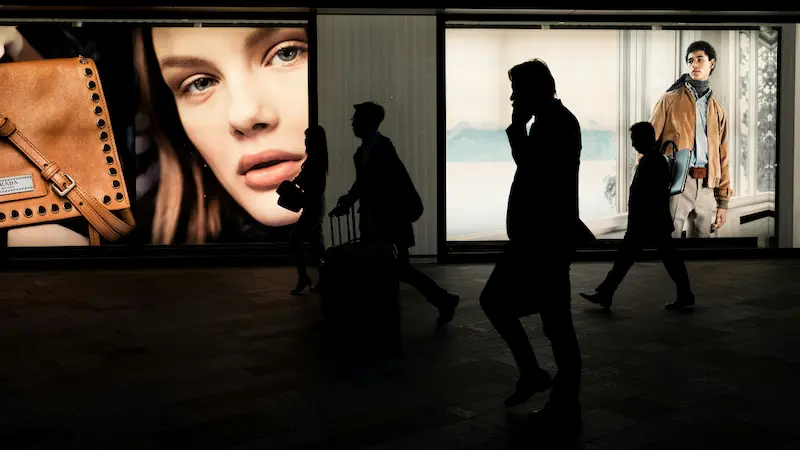
Table of Content
Customers can choose between online convenience and in-store adventures in the ever-changing retail market. Each choice has merits and cons for today's buyers' interests and lifestyles. Although virtual carts and click-to-purchase have made buying easier, in-store shopping still delivers the pleasure of testing before you buy. This article discusses the pros and cons of online shopping vs in-store shopping.
Convenience in the Digital Realm: Online Shopping
Consumers will always go for the convenient option when it comes to shopping. Without leaving home, consumers may explore a wide selection, compare costs, and buy with a few clicks or taps. Personalized recommendations, one-click ordering, and fast delivery improve customer pleasure beyond accessibility. Online shopping meets current consumers' demands for efficiency, choice, and time-saving, making convenience a must.
The Ease of Virtual Carts and Click-to-Buy
The convenience of virtual shopping carts and click-to-buy options has revolutionized the retail sector. According to research, 43% of online customers claim to enjoy online shopping as they can simply add things to their virtual shopping carts in the comfort of their homes. This efficient approach facilitates the comparison of product pricing, features, and reviews. Click-to-buy expedites the purchasing process and enables individuals to shop remotely. The efficiency of online purchases saves time and enhances its attraction to shoppers who have a fast-paced lifestyle.
Drawbacks of Online Shopping
Although online shopping offers numerous advantages, it also presents concerns for many buyers. 31% of online shoppers cited the rising prevalence of digital fraud as one of the top disadvantages of online shopping. Online shoppers are susceptible to deception by online shopping platforms that sell fake products with appealing attributes. Another downside is shipment delays, which might annoy eager buyers. Wait times can be extended due to external delivery services and unanticipated logistics, reducing transaction speed.

Tangible Experiences: In-Store Shopping Adventures
In-store shopping leads to tangible experiences and engages consumers' senses and emotions, unlike online shopping. Multisensory exploration occurs in retail locations as shoppers touch, see, and smell things. The environment, interior design, and background music affect the shopper's mood and enhance the emotional aspect of shopping. Thus, in-store shopping excursions capture the essence of tangibility, making buying a rich, sensual journey that transcends business.
The Joy of Trying Before Buying
Online shopping lacks the tactile and sensory advantages of physical stores. According to Zappia Research, 61% of in-store shoppers asserted that trying, feeling, or smelling the goods before buying enhances the shopping experience. Shopping in-store is exciting and holistic for many shoppers due to sensory engagement. Touch and feel provide you confidence that online shopping lacks in fabric texture, shoe fit, and tech device performance.
In-Store Challenges: Queues, Limited Hours, and Spontaneous Purchases
While in-store shopping offers several advantages it also has several downsides that affect client satisfaction.
Queues
According to statistics, 75% of customers who purchase in physical stores say that checkout queues are the worst experience in in-store shopping. Queuing can be stressful, particularly for individuals with packed schedules. Online businesses offer a streamlined checkout process that allows customers to make purchases with only a few clicks, eliminating the need to wait in line.
Few Hours
Physical stores have limited open hours, which can affect busy consumers, especially those who work irregular hours or have commitments outside of office hours.
Impulse Buys
In-store displays skillfully arranged merchandise, and tempting promotions can result in 30% impulse purchases. While some individuals may have a preference for this, it might result in excessive expenditure and feelings of regret among buyers.
Bridging the Gap: The Role of Digital Signage
Amidst a time when the boundaries between online and offline encounters become indistinct, retail digital signage bridges the gap by combining the ease of internet shopping with the immersive and stimulating sensations of in-store interactions. Integrating digital signage enhances in-store engagement and transforms customer interactions with products and brands, heralding a new retail engagement and satisfaction era.
Enhancing In-Store Experiences with Digital Signage
Digital signage employs vivid images and interactive content to augment the shopping experience and foster an immersive ambiance. Furthermore, these digital screens provide product demos, user assessments, and virtual try-ons. This technology greatly facilitates spreading information, promoting creativity, and developing a connection between customers and products, thereby improving the shopping experience.
CTA https://drive.google.com/file/d/1aYoWviS7UFvh3Dc7bpAu-CuBU4DPZZgK/view?usp=drive_link
Interactive Catalogs and QR Codes
Integrating interactive catalogs and QR codes for different businesses transforms the modern retail industry by combining online and in-store experiences. Customers can browse a wide variety of products in the physical store by utilizing interactive catalogs shown on digital signage, and they can also access information over the Internet. These interactive panels in physical stores let customers explore various products, allowing them to inspect product features and read user reviews. Furthermore, buyers can use their cellphones to scan QR codes, granting them access to information about the product's origins and user-generated content. This improves their overall experience while shopping at the physical store. These codes aid shoppers in understanding products and improve their decision-making process.

Increasing the Average Check: Offline Strategies
Retailers can utilize offline strategies to optimize shopping engagement and augment the value of transactions by incorporating digital signage. Interactive screens, focused promotional campaigns, and customized suggestions motivate customers to explore complementary products or enhancements, increasing the average transaction amount. The seamless integration of the traditional way and digital signage in retail stores enhances shopping and the value of store visits. This ensures that customers can locate the items they require and sometimes discover unexpected treasures.
Navigating the Checkout Dilemma: Online vs. In-Store
A shopper's adventure concludes with the checkout process when the quickness and seamlessness of online purchases combine with the human interaction and tailored attention found in physical stores. This pivotal decision impacts purchasing engagement when consumers juxtapose digital checkouts with in-person interactions.
Seamless Online Checkouts: The Virtues of Digital Transactions
Online digital transactions offer various benefits, such as a streamlined checkout process. E-commerce solutions provide secure payment gateways, order confirmation, and prompt delivery with minimal effort. This smarter solution saves time and fulfills the modern man's need for simplicity. Digital transactions provide both versatility and ease of use. Online shopping enables people to conveniently make purchases from all over the world, whether at home, work, or using their mobile devices.
The Human Touch: In-Store Checkouts and Customer Service
You connect customers with well-informed staff members at checkouts, providing them with personalized service and fostering a personal relationship. Direct interpersonal exchanges offer opportunities for tailored suggestions, prompt issue resolution, and reassurance. Engaging in inquiries, getting assistance, or engaging in conversation enhances the buying process and fosters brand allegiance. Cashiers provide attentive customer service, which is essential to increasing sales. The personal interaction with clients instills a sense of worth and comprehension that extends beyond monetary considerations. This personalized approach speeds up the solution process, increases customer satisfaction, and demonstrates the brand's outstanding service.
Beyond the Transaction: The Overall Shopping Experience
Shopping is a complex experience that evokes emotions, stimulates the senses, and generates lasting memories. From the beginning of a purchase to its completion is an entire symphony. The atmosphere and design of a store or the user interface of an online platform sets the stage for familiarity. Product encounters whether it's shelf introductions or online recommendations are exciting and engaging. Smooth transactions, clear policies, and efficient after-sales service enhance the experience.
From Online Reviews to In-Store Ambiance
Taking into account online reviews and the ambiance of the enterprise is making a difference in the buying process for today's consumers. Reviews serve as a digital platform where users may evaluate and assess the quality, functionality, and satisfaction of products. Displaying Google reviews offers customers valuable insights and boosts brand reputation. On the contrary, offline retail has embraced the use of digital signage to display customer feedback and improve the atmosphere within the store. The integration of visual perception, tactile sensation, and audible inputs creates a highly immersive environment that impacts customer behavior.
Striking a Balance: Fusing Online and In-Store Experiences
As digital retailing progresses, it is rapidly erasing the distinctions between buying channels, providing customers with a seamless buying experience regardless of location. While online purchases have negatively impacted conventional stores, omnichannel retailing delivers a positive and promising solution. Shoppers who utilize many channels are more inclined to endorse the brand compared to those who use only one channel. However, achieving success in omni-channel requires merchants to develop exceptional strategies for shoppers, which involves implementing intelligent customer identification strategies to enhance the personalization of these strategies.
The Future of Retail in the Digital Age
There are distinct advantages and drawbacks to online shopping vs in-store shopping. Digital signage enables retailers to take advantage of the benefits from both sides, allowing them to establish a thriving enterprise. By integrating the convenience and extensive accessibility of e-commerce platforms with the tailored and individualized encounters of brick-and-mortar establishments, retailers can offer cohesive and uninterrupted buying experiences for their clientele.
Take advantage of Look digital signage software's interactive features and apps to create immersive content to digitize your store while maintaining the traditional shopping charm.







